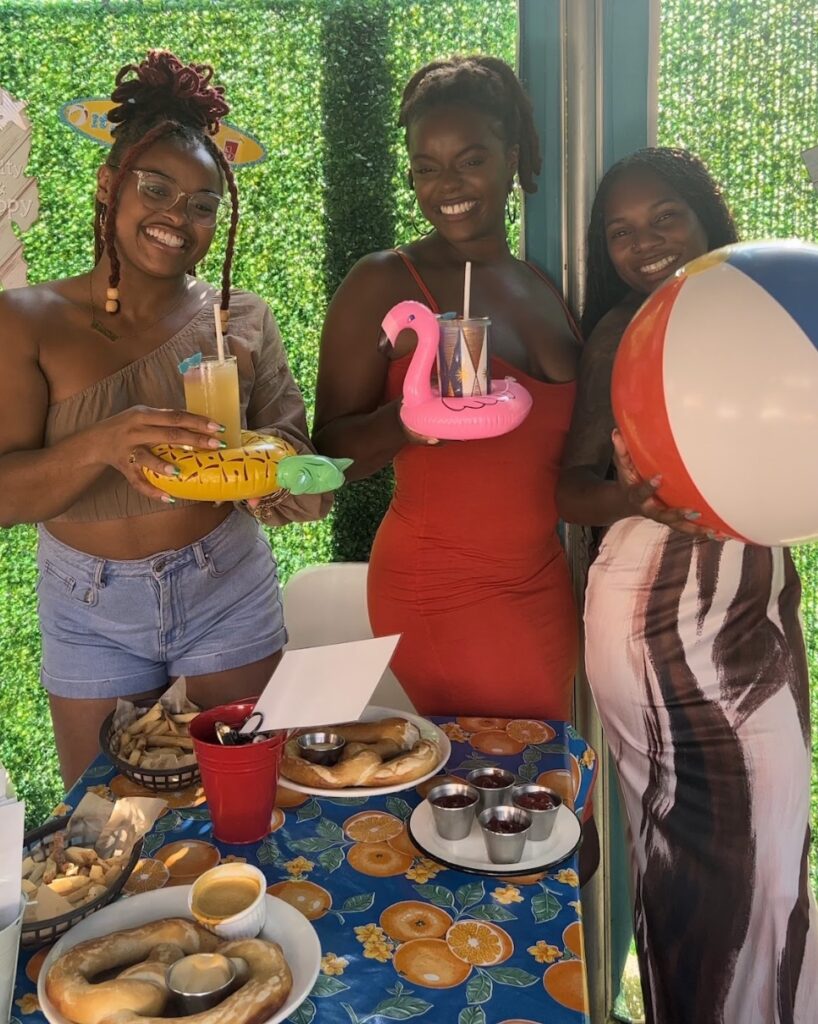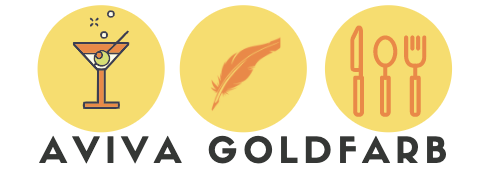Burning Cash and Goodwill vs. Lifting Sales by 50%
When I suggest to new clients that we work with content creators–a.k.a. “influencers”–to raise awareness and grow sales, they often groan, or tell me they tried that and it didn’t work, or they don’t want to waste food and money on influencers.
That’s because most restaurants are doing influencer marketing all wrong!

Many restaurants have had negative experiences working with influencers because they have never done so strategically. Instead, they may have comped some meals for people who may or may not be effective content creators, but haven’t seen any returns on that investment.
I have had astoundingly good–and measurable–results for my clients by working with content creators. For most restaurants, bars and bakeries, working with influencers should be an essential part of your marketing strategy. When done correctly, restaurants I have worked with have seen a sales lift for a specific promotion (such as an opening, new happy hour, brunch, or other new launch) by 40 – 50% per influencer campaign, and that lift usually holds steady for about 6 – 8 weeks. They have also seen a marked increase in their own following and engagement–one of my clients recently nearly doubled their Instagram following after we did an influencer campaign together.
“I can understand why some restaurant operators are fatigued with it, but it really does work and translates to more visits and sales. I always review with my team who the influencer is, what their preferences are, the expectations for them to have prime seating with good lighting, and any helpful notes. We always make it clear from the start that they are our guest and encourage them to order generously. It really goes a long way towards the quality of the work they will do.” Kelly Phillips, co-founder, Destination Unknown Restaurants.
What are influencers: I prefer to call them content creators rather than influencers because of the professional and creative storytelling work they do, but for the sake of simplicity and familiarity, I will refer to them by their more common title, influencers. Also in this context, “influencers” means people who create content on social media for their fans and followers to entertain, but also to provide guidance on choosing restaurants, services, outings, and products that they have personally experienced.

Why influencers’ time and content are so valuable: Because so much of social media content has become focused on video, the content influencers create takes unique and valuable skills and a lot of time to produce, in addition to the need for them to stay on top of trends to make their content visible and relevant to followers.
For any 5 – 15 second post you see on Instagram or TikTok, you can assume that it took the content creator anywhere from 4 – 10 hours to create, which includes the time to travel to and from the establishment, park, experience it to gather content, and then editing, writing a caption, posting, responding to comments, communicating with the “client” or PR agency, and promoting the content. Their time is extremely valuable and they work HARD.
What’s more, the vast majority of influencers also work full time, and creating content is something they do on the side because they enjoy it and feel passionate about it. In just the past year, I have worked with creators who are journalists, lawyers, social workers, communications professionals, scientists, and police officers, to name just a few. Many are also parents and/or students–they have very full lives!
As the traditional media landscape (sadly) shrinks, social media content creators are becoming even more important as effective means to get the word out to potential customers about things to do, buy, or places to visit. Unlike most traditional media, they can show and tell about an experience through videos and photos, which is so effective in enticing visitors by giving them a taste. What’s more, as we all know, most people under 40 consume far more social media than they do traditional media and it heavily guides their purchasing decisions.
What influencers generally value most is being able to share, sometimes even breaking news about, new and unique experiences, such as restaurant openings and new offerings, hidden gems, live shows, and temporary exhibits. Like all of us, they also value being treated professionally and respectfully!
How NOT to work with influencers: I do not recommend comping people who come to your establishment and claim to be influencers but who haven’t contacted you in advance to ask if they can visit in exchange for a comped meal, or been invited, unless you have a strategy for selecting the right influencers, and realizing and maximizing your return on this investment of your time and costs of goods.
Effective content creators will rarely ask to be comped without contacting your establishment in advance and making an agreement for what you will provide, and what they will provide in return, and when they will visit.
How to effectively work with social media influencers

Influencer marketing needs to be part of an overall marketing strategy.
When you are opening a restaurant, bar or bakery, or introducing a new service or menu, it Is important to have a strategy for how you will let customers and potential customers know in order to drive visits and sales. This usually includes messaging, talking points, photos/videos, email marketing, earned media (a.k.a PR), website updates, and social media, and sometimes includes signage/printed material, and grassroots marketing.
More on restaurant marketing basics
Influencer marketing needs to be done strategically
As part of this marketing strategy, I usually suggest doing some influencer marketing. This influencer marketing could include an influencer event, or inviting some influencers for comped visits to be one of the first to experience the new offering in exchange for a post and stories about their experience.
How to choose which influencers to work with: Influencers should be selected based on whether they create effective content, their interests (i.e. cheap eats vs. luxe meals out, or complex cocktails vs. boozy brunches) and whether their audience matches your ideal customers, both demographically and geographically. For example, for an aggressively priced happy hour or all-you-can-eat brunch, you might target influencers with a younger audience, and for a fine dining experience, you would likely select influencers whose audience skews a little older and has more financial resources.
How to communicate with content creators to ensure the best results: Just as you would do when contacting traditional media, an influencer invite should include a warm introduction, why you think they would be the right fit, why your content is relevant now, why it will be a great experience for them, and what your specific ask is in return (i.e. a dedicated post by x date). For a scheduled visit or an event, I recommend letting them bring a “plus one” which will make them more comfortable and likely to visit, and will help them get great content, as often their dining companions help with camera work. Once they are booked, I send them brief talking points about the restaurant to make it easier for them to post and to try to ensure they are on message.
What to offer influencers: Typically for a restaurant the exchange might be a meal and drinks and dessert for two (to avoid misunderstandings, you can set a reasonable and generous food and beverage budget for them to stick to, and consider sending out some surprise and delight dishes), in exchange for a social media post on Instagram (I suggest asking them to consider adding your business as a collaborator on the post) or TikTok or both, and some Instagram stories where they would tag your place of business.

Should influencers leave a tip? Some restaurants I work with feel pretty strongly that they should, but I disagree. As I mentioned above, influencers have a lot of demands for their time, and spend a lot of time visiting and creating content, and that has great value. I would tell them in advance that they do not need to leave a tip, but if they insist of course that is great.
Communicate influencer visits with your in-house team so they are expecting them! One of the most frustrating and humiliating experiences influencers have, and it happens far too often, is to be invited to a restaurant, only to arrive and have the on-site team not be aware of their visit, and the terms of the visit, and not be welcoming.
When I schedule an influencer visit for my clients, I send a calendar invite, and within 24 hours of the visit, I send a reminder by email and/or text to both the influencer and the restaurant owner or GM to make sure they are expecting the visit so it will go smoothly. Make sure the influencer has the name of a point of contact at the restaurant, and I always give them my mobile number in case anything goes awry.
Pro Tip: Have the owner and/or General Manager or chef stop by their table briefly to say hello and get their feedback and answer any questions.

How many influencers should I invite for my launch? This totally depends on how many meals you can afford to comp, and your restaurant’s capacity. For example, for a recent brunch launch for a client, we invited 12 influencers, and in hindsight that may have been a little ambitious. The combined views on the content from those visits were well over over 1 million, and the brunch was slammed for about 2 months, with brunch sales increasing 50%! So if your place is smaller, you might want to stick with 5 or 6 confirmed visits, so you don’t risk overwhelming your team and negatively affecting service for customers (in this case the restaurant was very busy but could handle it with some minor adjustments.)
Pro tip: Keep a record of which influencers visited, when, and a link to their content to track results and guide future invitations.
Measure sales: After an influencer event or campaign, measure the sales for that specific promotion for the following 8 weeks to see how powerful and long lasting the impact was. That will help inform future campaigns and budgets.
Hire a pro to help: Influencer marketing evolves quickly and it’s important for marketers to keep up with the trends so we can guide our clients to successful interactions and results with content creators.
If you are in the DC area, let me know if I can help you drive sales via influencer marketing. Shoot me a message at aviva@avivagoldfarb.com.
More valuable guidance on influencer marketing from restaurant marketing expert Dave Ciancio.

